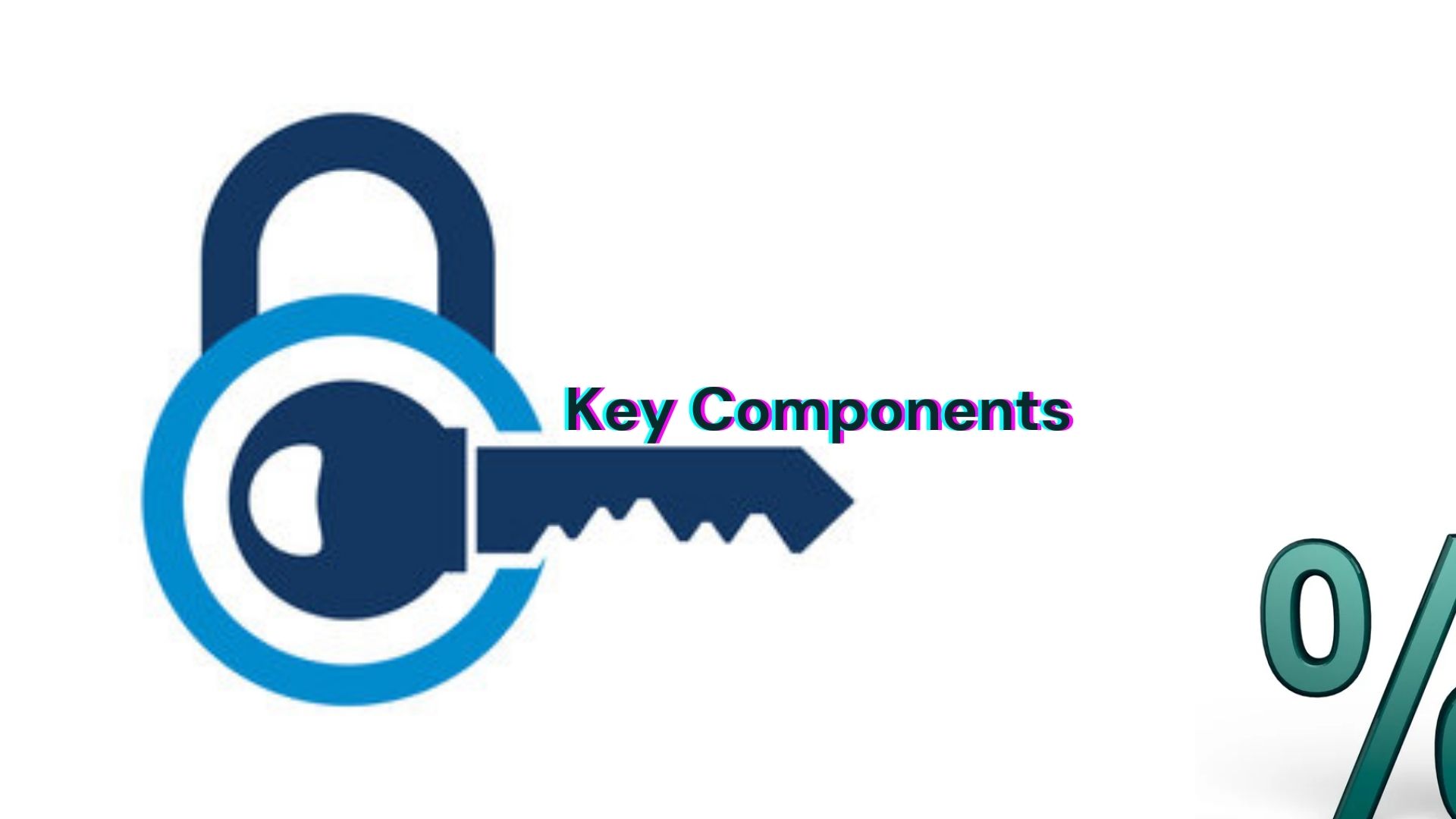Master the Percent Complete Formula for Project Management
Ever wondered how project managers keep track of project progress? Or how they’re able to tell you exactly what percent of the work is done? It’s not magic—it’s the power of the percent complete formula. This handy tool is a lifesaver in project management, helping to measure progress and predict timelines accurately.
But it’s not just for the pros. Whether you’re planning a home renovation, organizing a community event, or even mapping out a study schedule, understanding the percent complete formula can give you a better grip on your tasks. Let’s delve into this intriguing mathematical approach and discover how it can streamline your projects and simplify your life.
Understanding the Percent Complete Formula

The Basics of Percent Complete
In taking a closer look, you’ll find that the percent complete formula is simple yet powerful. At its core, it quantifies progress. Let’s break it down to the essentials: it’s a fraction where the numerator represents the amount of work completed, and the denominator represents the total amount of work. That fraction then gets multiplied by 100 to convert it into a percentage.
The formula, in its simplest form, looks like this: (Amount of Work Completed / Total Amount of Work) * 100 = Percent Complete. It essentially measures how far along you are in a task, project, or event based on quantifiable parameters. It’s a tool that provides a clear snapshot of your progress, whether you’re halfway through a task or nearing the finish line.
Applications in Various Fields
Interestingly, the percent complete formula isn’t reserved just for project management. Its usefulness spans across fields and industries. In construction, it’s often used to track progress in projects, identifying how much of the construction work has been completed against the total scope.
In academic fields like research, it tracks the completion of various phases, defining progress by completed tasks compared to the overall project. Even in marketing campaigns, the percent complete formula is highly valuable. It quantifies the success of strategies and activities within the campaign and offers a metric for improvement.
In essence, the percent complete formula’s applications extend wherever tracking and measuring progress becomes necessary. Whether one is juggling multiple projects, managing large-scale plans, or aiming to streamline tasks, this formula provides a straightforward gauge of progress. It’s the precise tool needed to measure, manage, and progress toward your targets, regardless of the field.
Key Components of the Percent Complete Formula

Delving beyond the basics, it’s crucial to understand the critical elements that make up the percent complete formula. This formula encompasses two main factors—work accomplished and the total work scope. Both of these components play a pivotal role in the precision and accuracy of the formula’s results.
Work Accomplished
Work Accomplished refers to the portion of tasks or milestones completed in a given project, quantified according to the project’s predefined metrics. These could be measured in units like tasks completed, man-hours, milestones reached, or material used, depending on the nature of the project. For example, in a construction project, it might be the number of floors completed. While in a research project, it could be the number of study phases concluded. Recognizing these accomplishments becomes requisite in calculating the percentage of work completion.
Total Work Scope
Total Work Scope, the second integral component, represents the entire volume of work planned for a given project. It’s the sum total of tasks required to achieve the project’s objectives, quantified according to the same metrics used to measure Work Accomplished. For instance, in a marketing campaign, the total work scope might encompass the set number of advertisements to be run. In contrast, in a software development project, it could mean the number of code modules to develop. Accurately estimating this scope forms the basis for the denominator in the percent complete formula. Consequently, it’s as important as the work accomplished in deducing percent completion.
Calculating Percent Complete

In the realm of project management, precise calculations of percent complete serve as linchpins for successful project tracking. They establish an objective measure of progress, influencing informed decision-making and foresight in planning.
Step-by-Step Guide
- Identify the Total Work Scope first. This denotes every task, milestone, or deliverable expected within the project, from inception to completion. For instance, if your project involves a software development, the Total Work Scope might include designing, coding, testing, and deployment.
- Ascertain the Work Accomplished. Remember, it represents those aspects of the project completed thus far. For example, if you’ve finished designing and coding in the software development project, these would constitute your Work Accomplished.
- Put these two factors into the percent complete formula. Divide the Work Accomplished by the Total Work Scope, then multiply by 100.
Always recall the formula’s simplicity—divide work done by total work, then multiply by 100. It’s a potent tool in your project management arsenal that helps evaluate progress rigorously yet efficiently.
Common Mistakes to Avoid
Avoid common pitfalls to ensure accurate results. One common mistake is not regularly updating the Total Work Scope. Project scopes can change, if you don’t amend the formula to accommodate these alterations, you’ll miscalculate the percentage complete.
Secondly, beware of overestimating Work Accomplished. Just because a task is “almost completed,” doesn’t mean it counts as completed work. Only include totally finished assignments in the Work Accomplished for correct results.
Lastly, don’t forget to utilize authoritative sources while gathering and verifying data. Precise measurement of Work Accomplished and Total Work Scope hinges on reliable data. Remember to cross-check and validate your data points to enhance the formula’s accuracy and efficiency.
Calculating percent complete is integral to successful project management. Understanding how to calculate it correctly—and avoid common mistakes—ensures this invaluable tool delivers precise, reliable results every time.
Tools to Help Calculate Percent Complete

In the pursuit of expedited, efficient, and precise percent complete calculations, various tools ease the process. These instruments range from software solutions that perform extensive calculations and feed data into dramatic visuals to manual guides that simplify complex computations.
Software Solutions
Various software solutions are tailored to provide assistance in calculating percent complete for any project. They automate the complex math, offering ease and speed while maintaining accuracy. For instance, Microsoft Project, a widely used piece of software, automatically computes percent complete based off inputted data. Such tools offer task-level analysis, helping keep up-to-date with each project fragment and their respective progression.
Similarly, Project Management Information Systems (PMIS) like Oracle’s Primavera P6 or Asana provide visual graphs, Gantt charts, and other interactive elements to enhance the comprehension of project progress. These applications aren’t merely calculators; they’re comprehensive project management platforms that integrate, among other things, the ability to track percent complete.
Manual Calculation Aids
For those preferring more traditional methods, several manual aids simplify the percent complete calculation process. Project management templates or spreadsheets, for example, function as practical tools for manual calculation. They can be customized to accommodate specific project structures and requirements.
The prominent project management institute, PMI, offers resources like their PMBOK Guide, which includes guidelines to manually calculate percent complete on both larger and smaller scales. Other similar resources include Neil Whitten’s No-Nonsense Guide to Project Management, an excellent reference that clarifies complex project management concepts like calculating percent complete.
Chart templates for Gantt charts or S-curves can help visualize and spot any deviations in the project progression, providing a comprehensive overview. Their cultural universal understanding makes them useful tools for team communication about the project status.
Through these software options and manual aids, calculation of percent complete becomes a convenient, fast, and exact process, promoting more accurate project management.
Benefits of Using Percent Complete in Project Management

In project management, using the percent complete formula offers several benefits, including, but not limited to, improved project tracking and enhanced decision-making. Let’s delve deeper into these benefits:
Improved Project Tracking
Employing the percent complete formula allows for a more precise tracking of project progression. It gives a quantified overview of the work accomplished and the total scope of the work, providing a clear picture of how much of the project has been completed. For instance, a 60% complete indicates that 60% of the total work has been finished. This precise tracking aids in effective planning and scheduling, helping to avoid delays, and ensuring that projects stay on track for successful completion. Utilizing tools such as Microsoft Project or Oracle’s Primavera P6 can further augment this tracking process, enabling real-time tracking and smart calculation of the percent complete.
Enhanced Decision Making
Another key benefit resides in the improved decision-making provided by the percent complete formula. It offers valuable insights that aid in making informed decisions. For example, if a project is only 30% complete and still has consumed 50% of the budget, it might be a signal to reassess the project plan, schedules, or resources. This allows project managers to pinpoint inefficiencies and make necessary tweaks for better project execution. By empowering project managers with such accurate data, it paves the way for smarter, more effective decision-making.
Furthermore, the application of percent complete in project management software systems elevates its capabilities, creating automatic reports and dashboards that provide vital project updates in real-time. And it also eases communication with stakeholders, facilitating crystal clear project updates, which ultimately enhances transparency and trust.
Challenges and Considerations

In the journey of using the percent complete formula for project management, pursue two crucial facets: the accuracy of data and adjustments made throughout the project lifecycle. These elements play a substantial role in providing realistic tracking and accurate progress reporting.
Accuracy of Data
Accurate data forms the backbone of any percent complete calculation. I’d argue that the precision of input figures largely dictates the quality of the outcome. For instance, overestimating the percent complete leads to a bloated gauge of project progress, giving a false sense of comfort. Conversely, underestimating results in an undervalued view of progress, creating unnecessary panic among stakeholders.
Obtaining accurate data emerges as a key challenge. It involves gathering data from reliable sources, enforcing data integrity, applying apt weightages to critical tasks, and ensuring accurate entry into tools like Microsoft Project or Oracle’s Primavera P6.
Adjustments During Project Lifecycle
Adjustments are inherent to any project. It’s due to the dynamic nature of project environments where internal and external factors cause modifications in project plans. Given this, the percent complete formula must be flexible to accommodate these shifts.
The adjustments could be due to changes in resource allocation, changes in task estimates, or deviations from the project timeline. In all cases, it’s essential to update the percent complete formula to reflect these changes. Failure to do this leads to a misleading portrait of progress and could result in poor decision-making.
Incorporating changes into percent complete calculations presents a challenge, but tools like Microsoft Project and Oracle’s Primavera P6 can help manage this effectively with their flexible structures and real-time tracking capabilities. Hence, the consideration of adjustments goes hand in hand with successful utilization of the percent complete formula in project management.
Conclusion
So we’ve seen how the percent complete formula plays a vital role in project management. It’s all about accurate progress tracking and making necessary adjustments as the project evolves. Remember, the key lies in using reliable data sources and not falling into the trap of over or underestimating the percent complete. This can distort our understanding of how far we’ve really come. Tools like Microsoft Project and Primavera P6, as we’ve discussed, can be your ally in managing these adjustments effectively. The percent complete formula isn’t just a mathematical calculation, it’s a tool that reflects the dynamic nature of projects and helps us stay on track. It’s a vital part of our project management toolkit, and understanding it can make a world of difference to the successful completion of our projects.
Frequently Asked Questions
What is the percent complete formula in project management?
The percent complete formula in project management is a critical tool used for tracking the progress of a project. It provides an estimate of the portion of work completed in relation to the total work scope, which helps in evaluating efficiency and effectiveness.
Why is accurate data important in the percent complete formula?
Accurate data is vital in the percent complete formula because it provides realistic views of project progress. Misleading data causes misinterpretation of results which can lead to wrong decisions and project delays.
What tools are recommended for calculating percent complete?
Microsoft Project and Oracle’s Primavera P6 are noted for their ability to effectively calculate and manage percent complete in a project. These tools can handle all the necessary adjustments throughout the project lifecycle.
What happens if the percent complete is overestimated or underestimated?
Overestimation or underestimation of percent complete can distort the perceived progress of a project. This can lead to inaccuracies in the tracking and performance reports, negatively impacting decision-making and overall project success.
How often should adjustments be made to the percent complete formula?
The percent complete formula should be updated continuously throughout the project to reflect project dynamics. Tools like Microsoft Project and Primavera P6 can assist with managing these adjustments effectively.

Leave a Reply